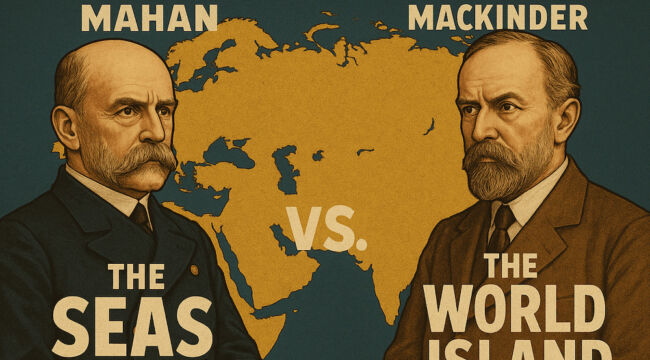The global geopolitical landscape is undergoing a profound transformation, challenging long-held doctrines of international influence and economic power. For over a century, two opposing theories have shaped how great powers strategize: one emphasizing control of the seas, the other, mastery of the landmass. Today, the latter is experiencing a powerful resurgence, fundamentally reshaping the future of international trade and power dynamics.
Historically, the concept of sea power, championed by figures like Alfred Thayer Mahan, posited that naval supremacy dictated global control. Nations like the United States and the United Kingdom built their prosperity and dominion by commanding the oceans, facilitating trade, and projecting influence across the globe. This maritime-centric order has allowed certain powers to maintain significant economic and strategic advantages.
In stark contrast, Halford Mackinder’s Heartland theory argued that true global power resided in controlling the vast Eurasian landmass, or the “World Island.” This perspective minimizes the importance of naval might, instead emphasizing the strategic value of land-based networks like railways, rivers, and pipelines. The ongoing evolution of global infrastructure now brings Mackinder’s insights sharply into focus.
A notable shift is occurring as nations previously constrained by maritime choke points pivot their strategies landward. This strategic reorientation is vividly demonstrated by ambitious initiatives designed to establish new arteries of commerce and connectivity across vast continental stretches, aiming to create robust alternatives to traditional sea lanes.
These comprehensive land-based infrastructure projects include the construction of extensive networks of ports, railways, roads, and pipelines, spanning from Asia through the Middle East and Africa, extending even into parts of Europe. Such undertakings are establishing crucial dry docks, fiber optic cables, and power grids, creating a seamless continental web largely impervious to external naval pressures or unilateral economic restrictions.
The development of these new Eurasian trade routes aims to circumvent vital maritime passages such as the Strait of Malacca and the Suez Canal. By linking distant markets through integrated rail and river systems, these land-centric connections offer unprecedented resilience against blockades or sanctions, rerouting global supply chains and enhancing the economic sovereignty of participating nations.
Ultimately, the world is moving towards a multipolar logistics system, where both maritime and land-based networks operate as vital, functioning complements. This evolving landscape suggests a future where nations must diversify their trade routes, strategically hedging against single points of failure, much like diversifying a financial portfolio to mitigate risks in the global economy. While existing maritime dominance remains significant, the strategic development of extensive land power infrastructure signals a fundamental rebalancing of global influence and international trade.






Leave a Reply